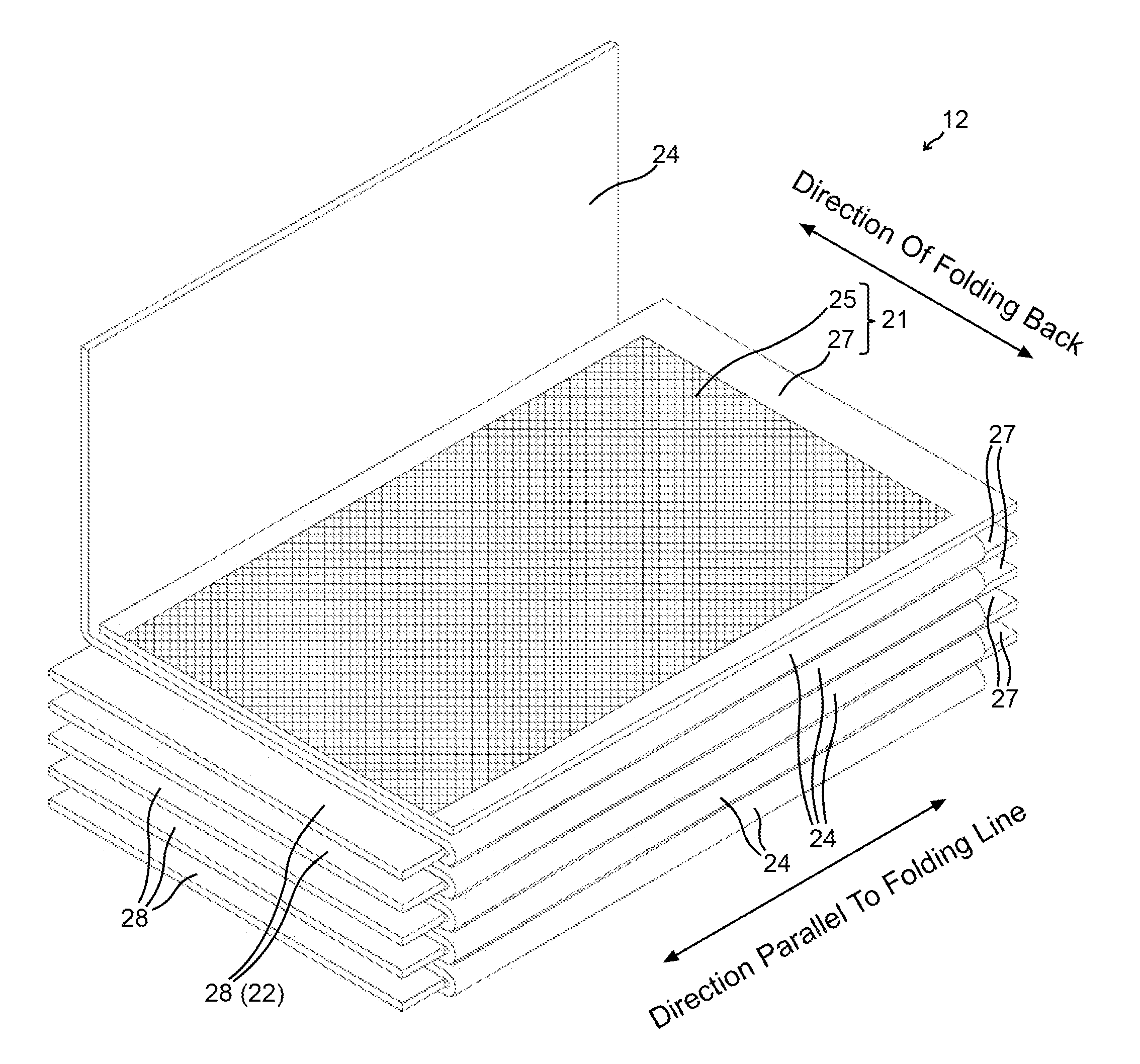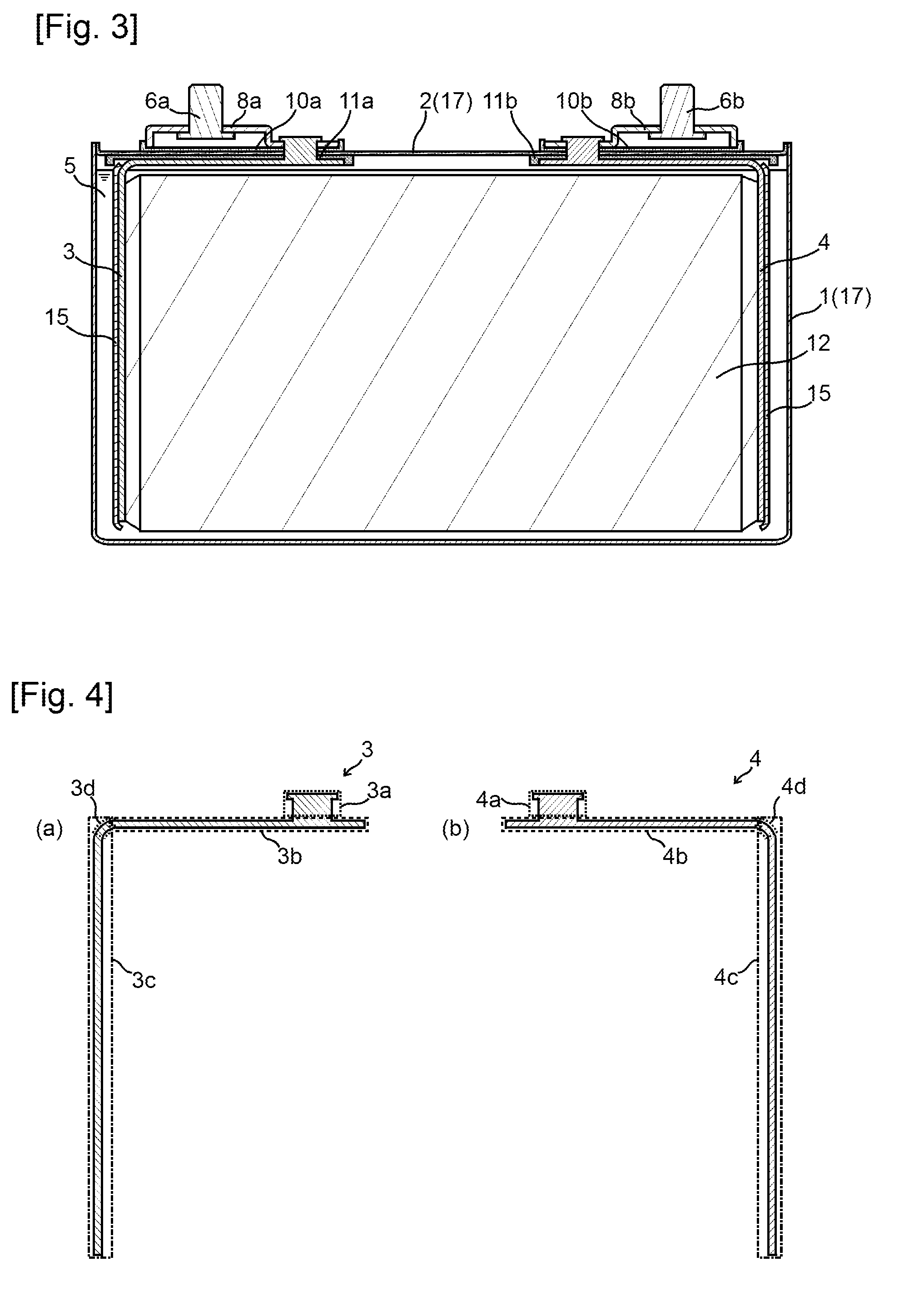Lithium-Ion Battery
a technology of lithium-ion batteries and ion batteries, which is applied in the direction of cell components, sustainable manufacturing/processing, and wound/folded electrode electrodes, etc., can solve the problems of current collectors breaking, batteries may have risks, and lithium-ion batteries may involve risk of ignition, so as to prevent current collectors from breaking, suppress vibration of power generation elements, and improve the effect of vibration resistan
- Summary
- Abstract
- Description
- Claims
- Application Information
AI Technical Summary
Benefits of technology
Problems solved by technology
Method used
Image
Examples
example 1
5. Example 1
[0086]In Example 1, lithium-ion batteries were prepared that were provided with a seamless polyethylene tube made of a polyethylene film and being 30 μm in thickness such that a power generation element, a positive-electrode current collector, and a negative-electrode current collector were inserted into the polyethylene tube; and then the polyethylene tube was thermally shrunken so that these lithium-ion batteries were subjected to the vibration test.
[0087]All the batteries with this structure were disassembled after the vibration test, and the following was found: the shrink tube of the two batteries slightly split near an upper portion of the current collectors only in a length of about 2 mm. None of bases of foot portions of the current collectors was broken or cracked.
example 2
6. Example 2
[0088]In Example 2, lithium-ion batteries were prepared that were provided with a seamless polyethylene tube made of a polyethylene film and being 50 μm in thickness such that a power generation element, a positive-electrode current collector, and a negative-electrode current collector were inserted into the polyethylene tube; and then the polyethylene tube was thermally shrunken so that these lithium-ion batteries were subjected to the vibration test.
[0089]All the batteries with this structure were disassembled after the vibration test, and the following was found: the shrink tube of all the tested batteries did not split. Also, none of bases of foot portions of the current collectors was broken or cracked.
example 3
7. Example 3
[0090]In Example 3, lithium-ion batteries were prepared that were provided with a seamless polyethylene tube made of a polyethylene film and being 100 μm in thickness such that a power generation element, a positive-electrode current collector, and a negative-electrode current collector were inserted into the polyethylene tube; and then the polyethylene tube was thermally shrunken so that these lithium-ion batteries were subjected to the vibration test.
[0091]All the batteries with this structure were disassembled after the vibration test, and the following was found: the shrink tube of all the tested batteries did not split. Also, none of bases of foot portions of the current collectors was broken or cracked.
PUM
| Property | Measurement | Unit |
|---|---|---|
| thickness | aaaaa | aaaaa |
| thickness | aaaaa | aaaaa |
| thickness | aaaaa | aaaaa |
Abstract
Description
Claims
Application Information
 Login to View More
Login to View More - R&D
- Intellectual Property
- Life Sciences
- Materials
- Tech Scout
- Unparalleled Data Quality
- Higher Quality Content
- 60% Fewer Hallucinations
Browse by: Latest US Patents, China's latest patents, Technical Efficacy Thesaurus, Application Domain, Technology Topic, Popular Technical Reports.
© 2025 PatSnap. All rights reserved.Legal|Privacy policy|Modern Slavery Act Transparency Statement|Sitemap|About US| Contact US: help@patsnap.com



